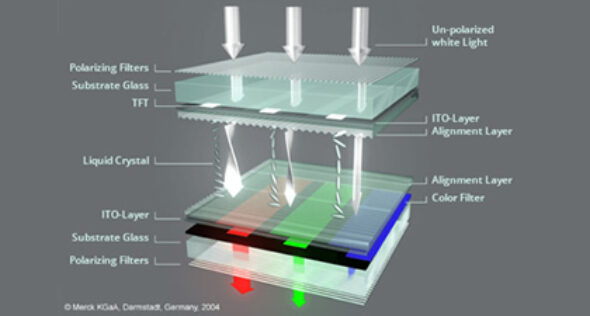Selecting a gaming monitor can be challenging: screen size, resolution, and price all matter, but the real difference often lies in the panel type. The three main LCD technologies — TN (Twisted Nematic), VA (Vertical Alignment), and IPS (In-Plane Switching) each have distinct strengths and weaknesses in terms of speed, color accuracy, contrast, and viewing angles. The best choice depends on your gaming style and priorities.
TN – Maximum Speed, Limited Color and Viewing Angles
TN panels, the oldest and fastest type, remain a classic choice for players focused on performance. They offer response times as low as 1 ms and can reach refresh rates up to 240 Hz, making them ideal for competitive gaming where every millisecond counts.
Other advantages include good black levels and minimal input lag, which reduce ghosting and motion blur. However, TN panels also have some drawbacks:
- Limited color range, covering only about 100% of the sRGB spectrum, with contrast ratios rarely exceeding 1000:1.
- Narrow viewing angles (around 170° horizontal / 160° vertical), causing color and brightness shifts when viewed off-center.
Modern TN panels have mitigated some of these issues, but color quality still lags behind VA and IPS options.
Best for: competitive gamers who prioritize speed and responsiveness over image fidelity perfect for FPS and fighting games.
VA – Excellent Contrast and a Great All-Rounder
VA panels strike a balance between image quality and performance. They provide:
- Very high contrast ratios, often exceeding 3000:1.
- Wide color coverage, often surpassing sRGB and approaching Adobe RGB.
- Wide viewing angles (178°) and strong HDR performance, which is why they are widely used in TVs.
Though slightly slower than TN panels, modern VA displays achieve 2–3 ms response times and refresh rates up to 200 Hz, more than sufficient for most gamers.
Strengths: deep blacks, rich colors, and outstanding contrast.
Weaknesses: slightly slower response times make them less suitable for competitive eSports play.
Best for: gamers who enjoy a variety of genres and want a strong balance between performance and image quality.
IPS – Superior Color and Viewing Angles, Less Speed and Black Depth
IPS panels are celebrated for their color accuracy and visual precision. They deliver near-complete coverage of the DCI-P3 color space (95–100%), offering 20–30% more color range than top-tier TN panels.
With 178°/178° viewing angles, IPS monitors maintain consistent brightness and color even from extreme angles — perfect for shared viewing or multiplayer couch sessions.
Recent advances have narrowed the speed gap between IPS and VA, with response times of 2–4 ms and refresh rates up to 150–165 Hz. Still, they have:
- Weaker black levels, losing some detail in darker scenes.
- Moderate contrast (around 1000–1200:1), lower than VA but higher than TN.
Best for: gamers who value visual immersion, accurate colors, and cinematic image quality ideal for RPGs, adventure, and open-world games.
At a glance
| Panel Type | Strengths | Weaknesses | Best For |
| TN | 1 ms response, 240 Hz, minimal latency | Limited color, narrow viewing angles | Competitive gamers, FPS, eSports |
| VA | High contrast, great HDR, rich colors | Slightly slower response | All-purpose gamers, visual enthusiasts |
| IPS | Accurate colors, wide viewing angles | Weak blacks, lower refresh rate | RPG/adventure fans, shared play, creative use |
Conclusion
Your ideal gaming monitor depends on your priorities:
- Choose TN for maximum speed and competitive edge.
- Choose VA for balanced performance and strong contrast.
- Choose IPS for realistic colors and immersive visuals.
Understanding these differences helps you select a monitor that perfectly matches your gaming habits without compromising between responsiveness and image quality.






